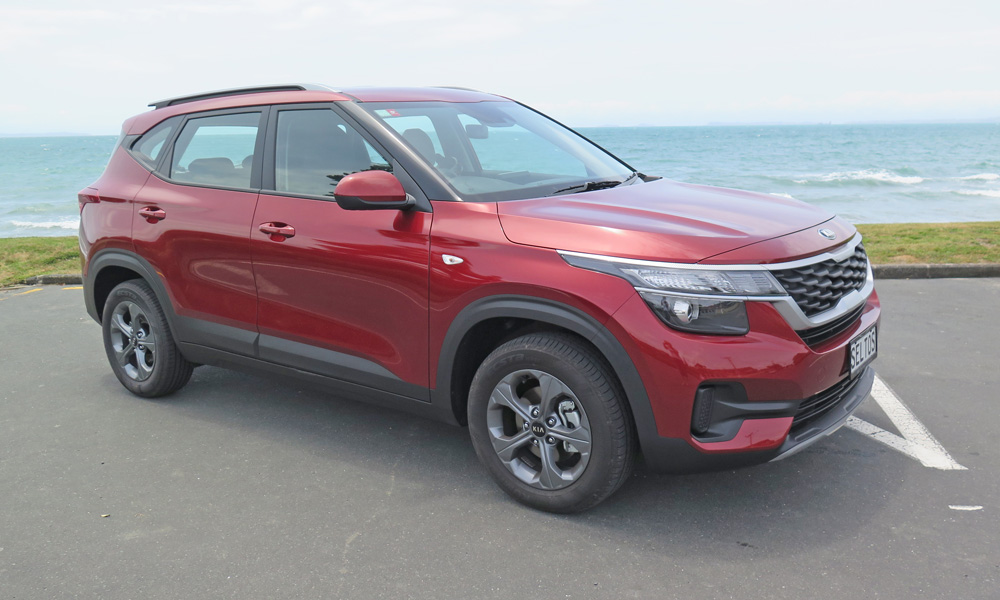
Kia EV6 GT-Line 2022 car review
The all-new Kia EV6 is a fresh addition to the Kia line up and is a much anticipated vehicle to land here in New Zealand.
22 January 2020
Just when you thought the number of different compact SUV models on our market had peaked, another enters the fray, this time from Kia.

The Korean-built Seltos range opens with five variants, four of them powered by the same 2.0-litre petrol engine, driving the front wheels via what Kia calls in Intelligent Variable Transmission auto. In other words, it delivers the economy benefits of a CVT, with the feel of distinct gear changes, or so Kia tells us. This trans is used in the US market Cerato, with the same engine.
The LX 2.0 opens the bidding at $25,990, with the top-spec version the $46,990 Limited, powered by a 1.6-litre turbo-powered petrol engine driving all four wheels via a seven-speed dual-clutch gearbox. Kia says it’s a similar set-up to the Cerato GT, with the same all-round independent suspension.
You’ll often hear there’s not much imagination in new-car designs, understandable given the costs associated with developing a model, and the time it takes for a concept to translate to the showroom floor. That said, designers – and the folk who choose paint and trim – seem more amenable to taking a risk when developing and finishing a more affordable car, and Seltos boasts a design that’s a whisker more adventurous than many, and therefore it’s very slightly more easily recognizable on the road.
Officially Seltos sits somewhere between the electric-powered Niro (it’s 35mm longer) and the Sportage, though its boot – at 468 litres in the LX and LX+, with their space-saver spare, or 433 litres in the EX and LTDs, which fit a full-sized spare – is bigger than both, and the rear seat seems roomy enough to interest those otherwise looking at vehicles a size up.
That makes Seltos roomy for its bracket.
Kia says the powertrain and suspension are tuned in Australia for down-under conditions. Certainly this CVT transmission is good, sufficiently responsive, and able to step down as revs rise, thus avoiding the too-relaxed feel of early CVTs. You can also select sport mode by knocking the gear lever across, a quick-access solution to a tad stronger pull and better engine braking where needed, without in any way suggesting sporting harshness. Steering and ride felt confident and comfy, too.
Specification is generous. The opener LX we tried fits an eight-inch touch screen with Apple CarPlay and Android Auto, auto emergency braking, Lane Keep Assist, cruise control, Driver Attention Alert, a reversing camera and rear park sensors, roof rails and six speakers. Suffice it to say it’s excellent value at its introductory price, though inserting a key is now starting to feel a little old school, and blind spot detection is a boon for those frequently driving motorway or urban roads and it’s not fitted to the entry car.
All other models also add smart cruise, blind spot detection with lane change assist, rear cross traffic avoidance assist and lane keep assist, they move up to a 10.25-inch touch screen and include satnav and front parking sensors. Higher-spec models also add larger alloy wheels, and depending on the variant can include a smart proximity key, interior sound mood lighting, a fast wireless phone charger, heated and ventilated front seats, and more.
While the Seltos might appeal to youngsters or young parents overseas, in NZ – where younger purchasers tend to start with a used import – the buyer demographic will likely be a tad older. Those with teenagers to carry may prefer to step up to a vehicle that’s a size bigger. As for those choosing between models, until the LX drops its introductory price there’s a good 10K extra to fork out for the LX Plus, likely to feel too much for what you get.
Meantime your decision could involve also considering this car’s Hyundai Venue sibling.
| At a glance | |
|---|---|
| Model | Kia Seltos LX, LX Plus, EX, LTD, LTD AWD |
| Engine | 2.0-litre petrol (all 2WD), 1.6-litre petrol (LTD AWD) |
| Price | $25,990 (LX tested), $35,990 (LX Plus), $37,990 (EX), $42,990 (LTD 2.0), $46,990 (LTD 1.6) |
| ANCAP safety rating | 5 |
| Power and Torque | 110kW at 6200rpm, 180Nm at 4500rpm (2WD), 130kW at 6000rpm, 265Nm from 1500 to 4500rpm (4WD) |
| Transmission | CVT auto (2WD), seven-speed dual-clutch auto (4WD) |
| Fuel economy | 6.8l/100km (2WD), 7.6l/100km (AWD) |
| Towing capacity | 1100kg (2WD), 1250kg (AWD) |
| 2WD/4WD/AWD | 2WD front wheels (LX, LX Plus, EX, LTD), AWD (LTD 4WD) |
| Seating capacity | 5 |
| Luggage capacity/payload | 468 litres, 1428 with rear seats down (LX, LX Plus); 433 litres, 1393 with rear seats down (EX, LTD, LTD AWD) |
